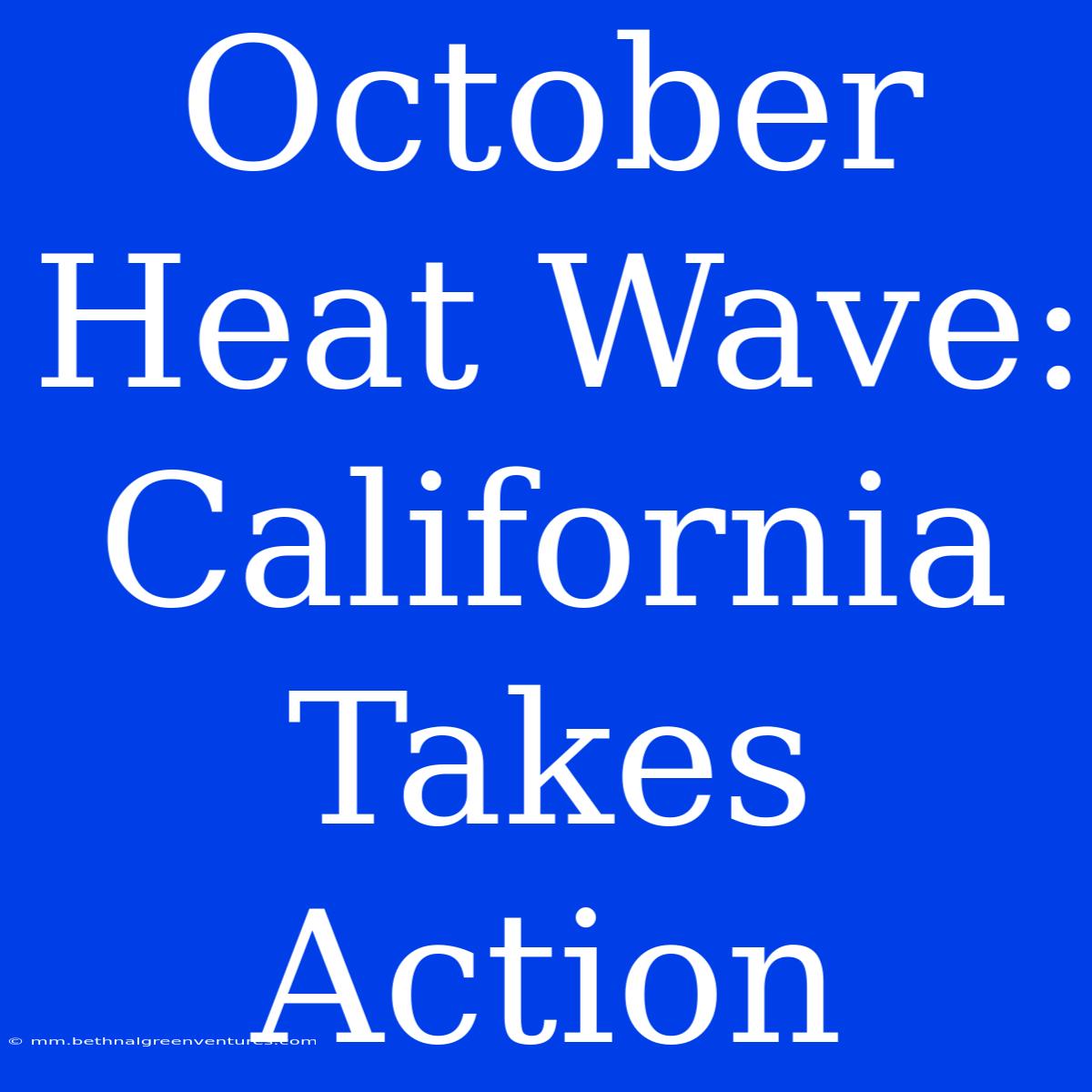October Heat Wave: California Takes Action - A Look at the Unseasonable Heat and the State's Response
Are October heat waves becoming the new normal in California? The recent spike in temperatures, shattering records and pushing the state into an unprecedented situation, has prompted the state to implement a series of critical measures. This article dives deep into the October heat wave, exploring its causes, impacts, and the actions being taken by California to mitigate the risks.
Editor Note: California's October heat wave, an unexpected and potentially dangerous event, highlights the growing threat of climate change and the crucial need for proactive measures to address its impacts.
This event has raised crucial questions about the future of California's climate and the need for robust adaptation strategies. It underscores the importance of understanding the factors driving these heat waves, the potential consequences, and the actions that can be taken to safeguard communities and ecosystems.
Analysis: We've analyzed data from various sources, including meteorological agencies, research institutions, and government reports to present a comprehensive overview of the October heat wave. We've also delved into the policies and strategies implemented by California, providing insights into their effectiveness and limitations.
Key Takeaways of the October Heat Wave
| Key Aspect | Description |
|---|---|
| Unprecedented Heat | Temperatures soared well above average, breaking historical records across many regions. |
| Climate Change Impact | Climate change is intensifying heat waves, making them more frequent and severe. |
| Public Health Risks | Extreme heat can lead to heat stroke, dehydration, and exacerbate existing health conditions. |
| Energy Demand | High temperatures increase energy demand for cooling, potentially straining the power grid. |
| Wildfire Concerns | Dry conditions fueled by the heat wave increase wildfire risks. |
California's Response to the October Heat Wave
State of Emergency: A state of emergency was declared to allow for the mobilization of resources and fast-track emergency measures.
Cooling Centers: The state opened numerous cooling centers across affected areas to provide safe and accessible respite from the heat.
Public Awareness: The state launched a public awareness campaign to inform residents about the dangers of extreme heat and provide guidance on staying safe.
Energy Conservation Measures: A call for voluntary energy conservation was issued to reduce strain on the power grid and prevent blackouts.
Wildfire Prevention: Increased resources were allocated to wildfire prevention efforts, including aerial patrols and ground crews.
Impact of the Heat Wave on California
Health: Extreme heat can lead to heat-related illnesses, particularly in vulnerable populations, such as the elderly, young children, and people with underlying health conditions.
Energy: The heat wave placed immense strain on California's power grid, leading to increased electricity demand and potential for rolling blackouts.
Water: The heat wave exacerbated drought conditions, increasing water scarcity and further straining water resources.
Agriculture: High temperatures can negatively impact crops and livestock, affecting food production and agricultural livelihoods.
Wildfire Risk: Dry conditions fueled by the heat wave increase wildfire risks, potentially leading to destructive fires.
Challenges and Future Outlook
While California has taken significant steps to address the October heat wave, there are still challenges to be addressed. Continued climate change will likely increase the frequency and intensity of extreme heat events, requiring further adaptations and investments in infrastructure and preparedness.
Moving forward, California needs to:
- Strengthen early warning systems: Improve forecasting capabilities and communication networks to ensure timely alerts and preparedness.
- Invest in climate-resilient infrastructure: Upgrade energy grids, water systems, and other critical infrastructure to withstand extreme heat and climate change impacts.
- Enhance public health preparedness: Develop robust public health plans for extreme heat events, including access to cooling centers and health education campaigns.
- Support vulnerable populations: Provide targeted assistance to communities most vulnerable to the impacts of extreme heat, such as low-income households and marginalized communities.
The October heat wave serves as a stark reminder of the urgent need to address climate change and its impacts. By taking proactive measures and collaborating across sectors, California can mitigate the risks of future heat waves and protect its communities.
